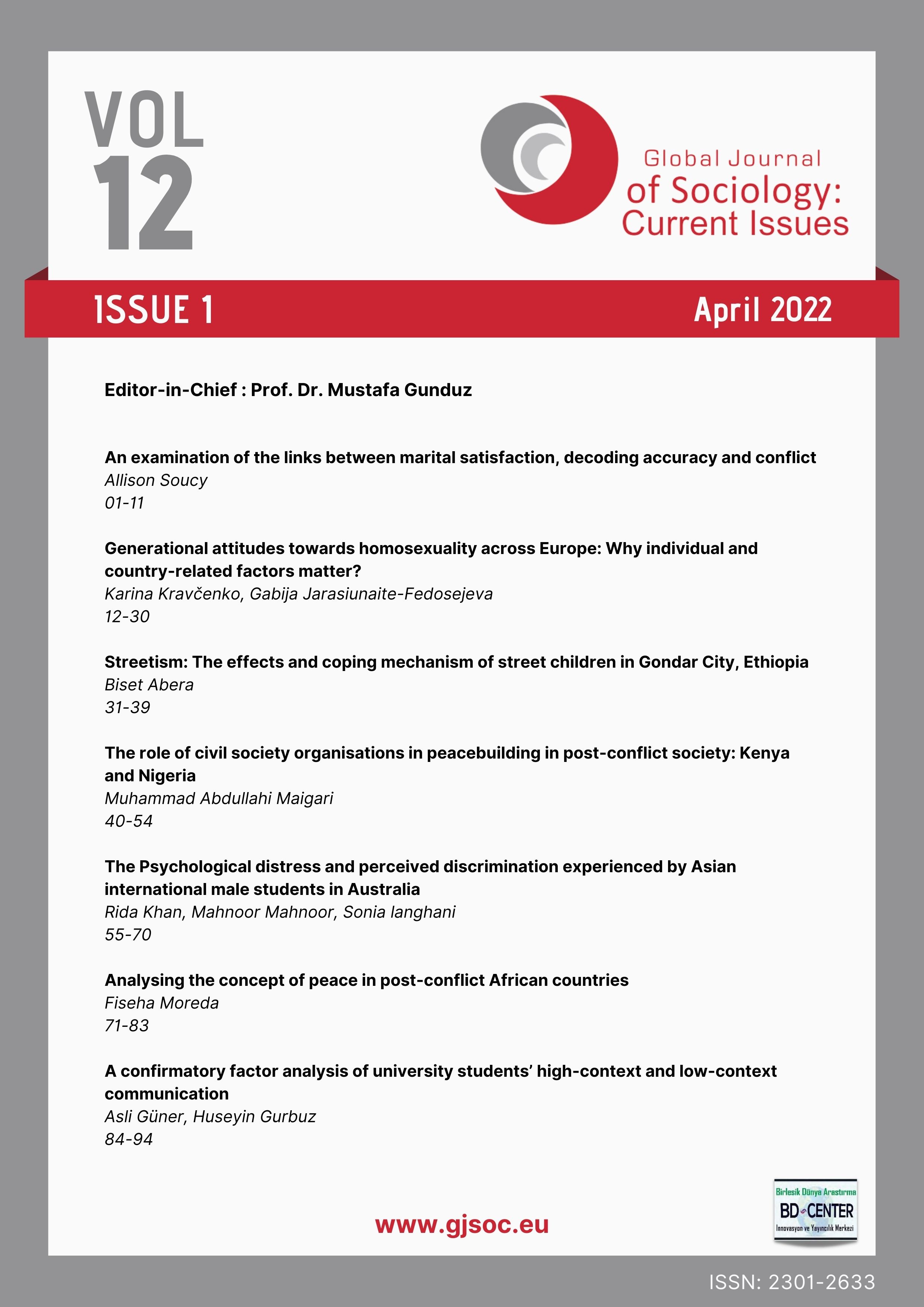A confirmatory factor analysis of university students’ high-context and low-context communication
Main Article Content
Abstract
This study aimed to examine the framework of Edward Hall’s high-context and low-context distinction in communication, which is one of the most widely used methods for comparing different cultures in terms of communication styles of individuals who are currently students. Choosing the survey as the data collection method, a questionnaire was prepared and applied to university students. Two hundred and eighteen people participated in the survey and 162 surveys were accepted. In the study, the relationships between communication types and demographic characteristics were also examined. It was found that these characteristics did not create significant differences in the types of communication. First-level confirmatory factor analysis (CFA) was applied to the data obtained through structural equation modelling (SEM). According to the results obtained by confirmatory factor analysis, communication in a high context (Y) factor has eight observed variables. There are seven observed variables of communication in a low context (D) factor.
Keywords: Communication, high-context communication, low-context communication, structural equation modelling (SEM);
Downloads
Article Details

This work is licensed under a Creative Commons Attribution 4.0 International License.
Authors who publish with this journal agree to the following terms:- Authors retain copyright and grant the journal right of first publication with the work simultaneously licensed under a Creative Commons Attribution License that allows others to share the work with an acknowledgement of the work's authorship and initial publication in this journal.
- Authors are able to enter into separate, additional contractual arrangements for the non-exclusive distribution of the journal's published version of the work (e.g., post it to an institutional repository or publish it in a book), with an acknowledgement of its initial publication in this journal.
- Authors are permitted and encouraged to post their work online (e.g., in institutional repositories or on their website) prior to and during the submission process, as it can lead to productive exchanges, as well as earlier and greater citation of published work (See The Effect of Open Access).
